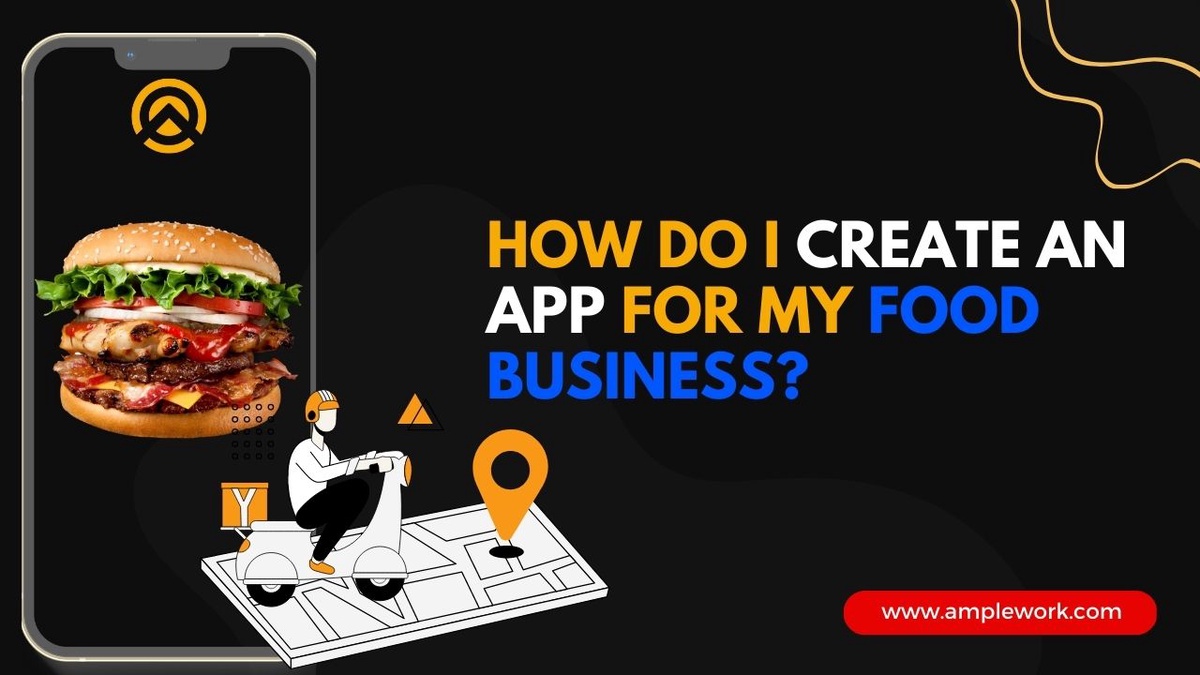The food industry has always been an essential part of human life, and with the growing population and changing lifestyle, the demand for the food business has increased significantly. The food business is not just limited to restaurants or cafes anymore; it has now expanded to food delivery services, online ordering systems, and food trucks. With the advent of technology, the food industry has seen a significant shift towards mobile apps for ordering, delivery, and payments. In this blog post, we will discuss the growing demand for food app development and the key steps involved in creating an app for your food business.
The food industry is a lucrative market, and the shift towards mobile app usage has made it even more profitable. According to Statista, the food delivery market is expected to reach a market volume of over $200 billion by 2025, and mobile food ordering is expected to grow at a CAGR of 17.3% from 2021-2025. These stats clearly indicate the growing demand for food delivery app development and how important it is for businesses to stay ahead of the competition by embracing technology.
Key Steps Involved in Creating an App for Your Food Business:
Step 1: Identify your app requirements
Before you start developing your app, you need to determine the specific features and functionality you want your app to have. Some essential features for a food business app might include:
- Menu and pricing information
- Online ordering and payment systems
- Delivery tracking
- Loyalty and rewards programs
- Reservation and table booking systems
- Integration with social media platforms
Step 2: Choose your app development approach
There are various app development approaches, such as native, hybrid, and web apps. Native apps are developed specifically for a particular platform, such as iOS or Android. Hybrid apps use a combination of native and web technologies, while web apps are web-based applications that run on browsers. You need to choose an approach that suits your budget, timeline, and app requirements.
Step 3: Hire an app development team or agency
Unless you have the expertise to develop an app yourself, you will need to hire a food delivery app development team or agency. Look for experienced food delivery app developers who specialize in mobile app development, particularly in the food industry. Make sure you review their previous work, read client reviews, and check their credentials before hiring them.
Step 4: Design and develop your app
The design and development phase is where your app idea comes to life. Work with your food delivery mobile app development team to create a user-friendly interface, develop the necessary features, and test the app for bugs and glitches. Make sure the app works seamlessly across different devices and platforms.
Step 5: Launch and market your app
Once your app is ready, you need to launch it in the app stores, such as the Apple App Store or Google Play Store. Develop a marketing strategy to promote your app, including social media marketing, influencer marketing, and paid advertising. Encourage your existing customers to download and use the app by offering incentives such as discounts or freebies.
Read More: How Much Does it Cost to Develop a Food Delivery App like UberEats or GrubHub?
Future of Food Business Market and Food App Development:
The food industry is continually evolving, and so is technology. As we move forward, the demand for food apps is only going to increase, especially as people continue to prioritize convenience and speed. The food industry has already seen significant changes due to mobile app usage, and it is likely that the trend will continue. As technology advances, new features and functionalities will be added to food apps, further enhancing the user experience.
One of the trends that we can expect to see in the future is the use of artificial intelligence (AI) and machine learning (ML) in food apps. AI can help businesses to personalize their offerings, analyze customer data, and improve the overall efficiency of the food ordering and delivery process. Additionally, augmented reality (AR) and virtual reality (VR) can be used to enhance the customer experience, allowing customers to virtually view and customize their food orders.
Another trend that is likely to continue is the rise of ghost kitchens or virtual restaurants. These are restaurants that operate exclusively online, without any physical storefronts. Ghost kitchens can reduce overhead costs, increase efficiency, and allow for a more diverse range of food options.
Conclusion:
To create a successful food app, businesses need to hire experienced food delivery app development services, identify their app requirements, choose the right development approach, design and develop their app, and launch and market it effectively. Food app developers play a critical role in this process, bringing their expertise and knowledge of the industry to help businesses create high-quality apps that meet the needs of their target audience. By following these steps and staying up-to-date with the latest technologies, businesses can create successful food apps that meet the growing demand for convenience and speed in the food industry.


No comments yet